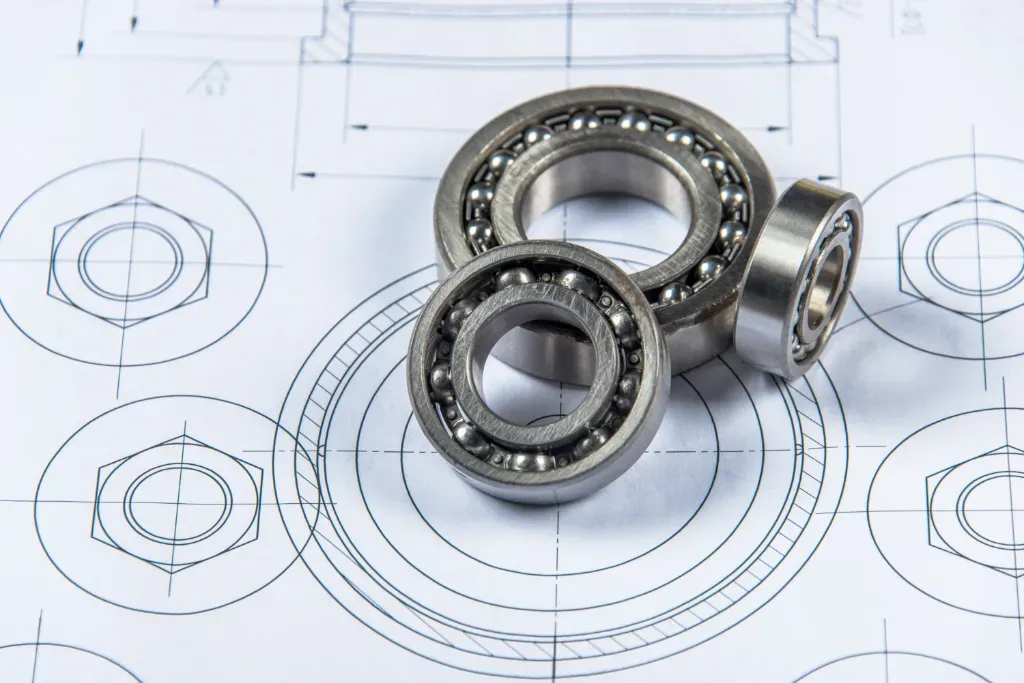Proper lubrication is essential to the efficiency of ball bearings, ensuring smooth, continuous operation of mechanical components. Adhering to correct lubrication techniques not only extends service life but also reduces maintenance costs by preventing frequent replacements and damage from friction or excessive heat. Implementing preventive lubrication—with disciplined procedures, correct products, and manufacturer-recommended intervals—provides the protection required for reliable operation across diverse duty conditions and optimizes bearing performance and durability.
Lubrication of Ball Bearings: Practices, Methods, and Common Pitfalls
Proper lubrication is essential to the efficiency of ball bearings, ensuring smooth, continuous operation of mechanical components. Adhering to correct lubrication techniques not only extends service life but also reduces maintenance costs by preventing frequent replacements and damage from friction or excessive heat. Implementing preventive lubrication—with disciplined procedures, correct products, and manufacturer-recommended intervals—provides the protection required for reliable operation across diverse duty conditions and optimizes bearing performance and durability.
Why Lubrication Matters in Ball Bearings
-
Friction Reduction & Smooth Operation: Correct lubricant application forms a thin protective film that minimizes metal-to-metal contact between rolling elements, raceways, and cages—supporting smooth, uninterrupted motion and preventing premature wear.
-
Wear Prevention & Life Extension: The film barrier suppresses micro-welding, scuffing, and abrasive wear, increasing bearing life and cutting unplanned stoppages and maintenance.
-
Corrosion & Contamination Protection: Quality lubricants act as a shield against moisture, dust, and other contaminants, preserving material integrity and maintaining performance within specified tolerances.
-
Preventive Maintenance Discipline: Regular, correct application and product selection aligned to OEM specifications maximize performance while minimizing repair and replacement costs.
Lubricant Types for Ball Bearings
Lubricating Oils
-
Best for high-speed service due to superior heat dissipation and low internal drag.
-
Penetrate internal geometries effectively, maintaining a consistent protective film and mitigating thermal rise under high RPM.
Greases
-
Preferred for heavy loads and harsh environments; offer better retention and sealing at the contact points.
-
The thicker consistency resists centrifugal sling-off and gravity drainage, improving persistence where re-lube access is limited.
Solid Lubricants
-
For extremes (very high temperatures, vacuum, or high contact pressures) where oils/greases are impractical.
-
Provide a durable boundary film that sustains operation in severe duty cycles.
Key Principle: Match lubricant chemistry and form (oil/grease/solid) to speed, load, temperature, and environmental exposure to ensure film integrity and thermal stability.
Lubricant Application Methods
Manual Lubrication
-
Suited to assets needing close human oversight or variable dosing.
-
Enables precise quantity control but demands trained technicians to avoid over/under-lubrication and contamination.
Automatic Lubrication Systems
-
Ideal for large plants or inaccessible bearings; provide consistent, scheduled dosing without constant human intervention.
-
Reduce downtime and human error, optimize lubricant usage, and are safer in high-speed or hazardous areas.
Point-to-Point (Targeted) Application
-
Precision delivery to critical zones or unequal load areas.
-
Often automated in modern facilities to increase accuracy, repeatability, and film reliability.
Re-Lubrication Frequency
-
Condition- and duty-based: Humidity, dust, load, and speed dictate interval length. Heavier loads, higher speeds, and harsh environments shorten intervals.
-
Inspection-driven: Visual checks and functional tests detect noise, increased torque, or lubricant degradation.
-
Condition Monitoring: Temperature and vibration trending reveal lubricant breakdown or emerging mechanical issues—enabling timely schedule adjustments and product changes.
Bottom Line: Customize re-lubrication intervals to operating conditions, verified by inspection and condition monitoring, to maximize efficiency and life.
Common Lubrication Errors (and How to Avoid Them)
-
Over-Lubrication
-
Consequence: Churning, heat buildup, seal stress, and premature wear.
-
Fix: Dose per OEM volume/frequency; use measured delivery tools/systems.
-
-
Wrong Lubricant Selection
-
Consequence: Film collapse, oxidation, inadequate low-/high-temp performance.
-
Fix: Select by speed, load, temperature, environment; verify base oil, thickener, viscosity index, and additives compatibility.
-
-
Inadequate Cleaning Before Re-Lube
-
Consequence: Entrained debris and old residues cause abrasive wear and additive conflicts.
-
Fix: Clean fittings/areas, purge contaminants, and maintain clean tools and reservoirs.
-
Conclusion
Effective lubrication is critical for the optimal performance of ball bearings.
-
Correct product (oil/grease/solid) and correct quantity prevent frictional heating and wear; too little or too much both shorten bearing life.
-
Intervals should reflect speed, load, and environment; a planned lubrication program sustains a protective film and prevents corrosion.
-
Preventive practices—proper selection, dosing, cleaning, and condition monitoring—extend bearing life, reduce costs, minimize downtime, and deliver reliable, economical operations across industrial applications.
Artykuł sponsorowany



